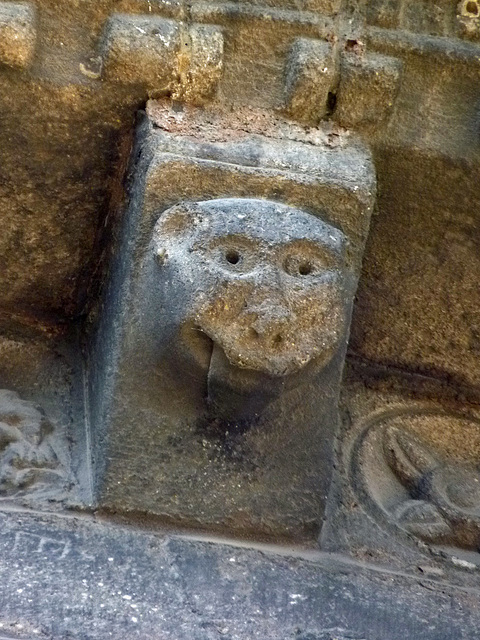Orsonnette - Saint Laurent
Avolsheim - Saint-Materne
Avolsheim - Saint-Ulrich
Avolsheim - Saint-Ulrich
Altorf - Saint-Cyriaque
Altorf - Saint-Cyriaque
Altorf - Saint-Cyriaque
Altorf - Saint-Cyriaque
Aniane - Accent Sud
St-Guilhem-le-Désert - Chateau du Géant
Le Barry - Chateau de Montpeyroux
Arboras - Insect
Approaching Saint-Jean-de-la-Blaquière
Prieuré Saint-Michel de Grandmont
Soumont
Lodève - St. Fulchran
Joncels - Saint-Pierre-aux-Liens
Joncels - Saint-Pierre-aux-Liens
Lunas - Saint-Pancrace
Lunas - Château de Lunas
Approaching Saint-Gervais-sur-Mare
Near Castanet-le-Haut
Murat-sur-Vèbre Saint-Étienne
Brioude - Saint-Julien
Brioude - Saint-Julien
Brioude - Saint-Julien
Brioude - Saint-Julien
Brioude - Saint-Julien
Brioude - Saint-Julien
Issoire - Saint-Austremoine
Issoire - Saint-Austremoine
Besse-et-Saint-Anastaise - Saint-André
Besse-et-Saint-Anastaise - Saint-André
Besse-et-Saint-Anastaise - Saint-André
Saint-Nectaire - Notre-Dame-du-Mont-Cornadore
Saint-Nectaire - Notre-Dame-du-Mont-Cornadore
Saint-Nectaire - Notre-Dame-du-Mont-Cornadore
Orcival - Notre-Dame
Royat - Saint-Léger
Royat - Saint-Léger
Royat - Saint-Léger
Royat - Saint-Léger
Clermont-Ferrand - Cathédrale Notre-Dame-de-l'Asso…
Clermont-Ferrand - Cathédrale Notre-Dame-de-l'Asso…
Clermont-Ferrand - Cathédrale Notre-Dame-de-l'Asso…
Location
Lat, Lng:
You can copy the above to your favourite mapping app.
Address: unknown
You can copy the above to your favourite mapping app.
Address: unknown
See also...
Keywords
Authorizations, license
-
Visible by: Everyone -
All rights reserved
-
248 visits
Brioude - Saint-Julien


The Basilica Saint-Julien in Brioude was a collegiate church constructed between 1060 - 1200. The architectoral structure is influenced by great romanesque churches like "Notre-Dame-Du-Port" in Clermont-Ferrand (70kms north) or "Saint-Austremoine" in Issoire (30kms north), planned and constructed within the same century. Three or four very skilled architects worked here over the century, all witrh a different touch. So Saint-Julien is really special, as it differs from the other great churches of the Auvergne.
Brioude was a center of pilgrimage very early, as already within the 4th century a "martyrion" existed over the grave of St. Julien. This building was replaced by an early basilica, financed by Victorius, a "comes" (count), installed by the Visigothic king Eurich after he had seized the Auvergne. Gregory of Tours (538-594 visited and described it, when he about a pilgrimage to Saint-Julien undertaken yearly from Avernis (= Clermont-Ferrand) to Brioude. Within the 10th century William I, Duke of Aquitaine, (aka "Guillaume Le Pieux" - "William the Pious") funded the building of a larger church here. He got buried in this church in 917. Around 1060, works on the church seen today started with the narthex. It took about 140 years, to complete it - and was a stopover at that time for many pilgrims to Santiago, only two days (60kms) away from Le Puy (Via Podensis).
Near the apses and all around are many carved corbels, most of them probably from the last building period (1160/1200). Most are carved from a soft stone, so, depending from the place, some are very weathered, while others are still in a nearly perfect condition.
The head of another little monkey protruding the tongue.
Brioude was a center of pilgrimage very early, as already within the 4th century a "martyrion" existed over the grave of St. Julien. This building was replaced by an early basilica, financed by Victorius, a "comes" (count), installed by the Visigothic king Eurich after he had seized the Auvergne. Gregory of Tours (538-594 visited and described it, when he about a pilgrimage to Saint-Julien undertaken yearly from Avernis (= Clermont-Ferrand) to Brioude. Within the 10th century William I, Duke of Aquitaine, (aka "Guillaume Le Pieux" - "William the Pious") funded the building of a larger church here. He got buried in this church in 917. Around 1060, works on the church seen today started with the narthex. It took about 140 years, to complete it - and was a stopover at that time for many pilgrims to Santiago, only two days (60kms) away from Le Puy (Via Podensis).
Near the apses and all around are many carved corbels, most of them probably from the last building period (1160/1200). Most are carved from a soft stone, so, depending from the place, some are very weathered, while others are still in a nearly perfect condition.
The head of another little monkey protruding the tongue.
- Keyboard shortcuts:
Jump to top
RSS feed- Latest comments - Subscribe to the comment feeds of this photo
- ipernity © 2007-2025
- Help & Contact
|
Club news
|
About ipernity
|
History |
ipernity Club & Prices |
Guide of good conduct
Donate | Group guidelines | Privacy policy | Terms of use | Statutes | In memoria -
Facebook
Twitter

Sign-in to write a comment.